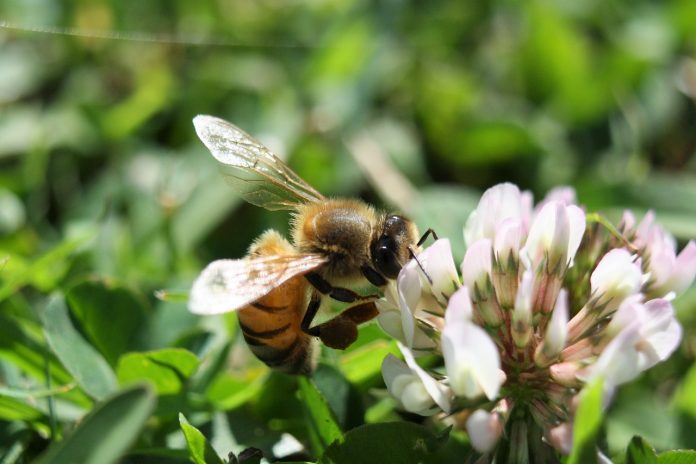It’s no secret bee populations have been declining for the last couple of decades as a result of habitat loss, chemical use and parasitic mites. Fortunately, people have taken notice and responded. More and more ways to help these key pollinators are being conceived and implemented. Whether you have a large impact or a small impact on restoring bee populations, every little bit counts.
Bee lawns
In recent years, tailoring gardens to create habitats and food sources for bees has become more popular. But, perhaps, gardening isn’t your thing. Gardens can be a lot of work to maintain. Not to mention all the time, money and effort you’ll have to put into choosing a location, preparing the soil and selecting plants. If a pollinator or bee garden isn’t for you, a bee lawn might be a better fit.
Flowering bee lawns promote biodiversity, require less maintenance and can be more cost-efficient in the long run. They are made up of a blend of turf grasses and low-growing perennials that bloom again after mowing. Bee lawns can be enjoyed like typical lawns while providing nutrients for foraging pollinators.
Plants to use
Flowering perennials
- White clover
- Dutch micro-clove
- Trefoil
- Dandelions
- Creeping thyme
- Daisies
- Shade-tolerant lamium
- Liriope
- Bugleweed
- Bearberry
- Pachysandra
- Sneezeweeds
- Globe thistle
- Milkweed
- Heal-all
- Crocus
Grasses
Grasses with a thin leaf blade and slow growth rate are preferred to prevent a canopy of grass from forming over the flowers. Festuca brevipila is one recommended variety. Other fescues and sedges with similar traits will also work.
Maintenance
Their natural diversity makes bee lawns more resilient than typical turf lawns. They require minimal watering and fertilizing, they encourage deeper roots and build healthier soil. Plus, those with bee lawns can take a more casual approach to yard work and mow their lawns less frequently. When it is time to mow — once about every two weeks — mowing to about 3 inches is recommended
Dealing with neighbors
Some neighborhoods are more particular about lawn maintenance than others. Unfortunately, lawns that are considered aesthetically pleasing to most people offer almost nothing to pollinators and other beneficial organisms.
Before installing a bee lawn, you should try to educate your neighbors and community on their many benefits to encourage more landowners — both residential and commercial — to consider installing one as well.
Ideal locations for bee lawns include sunny slopes, rocky ground, the medians of boulevards, golf courses, around parking lots and office parks.
If you experience push back in your particular neighborhood, you might consider turning only a portion of your lawn into a bee lawn instead of the whole thing. Signage can also help educate people and get them on board with your more casual landscaping approach.
Related Content
- How to help wild bees this summer
- How to plant a prairie garden
- How to garden for pollinators
- How to plant a hummingbird garden
- How to create a butterfly garden
- How do I attract native bees to my yard and garden?











